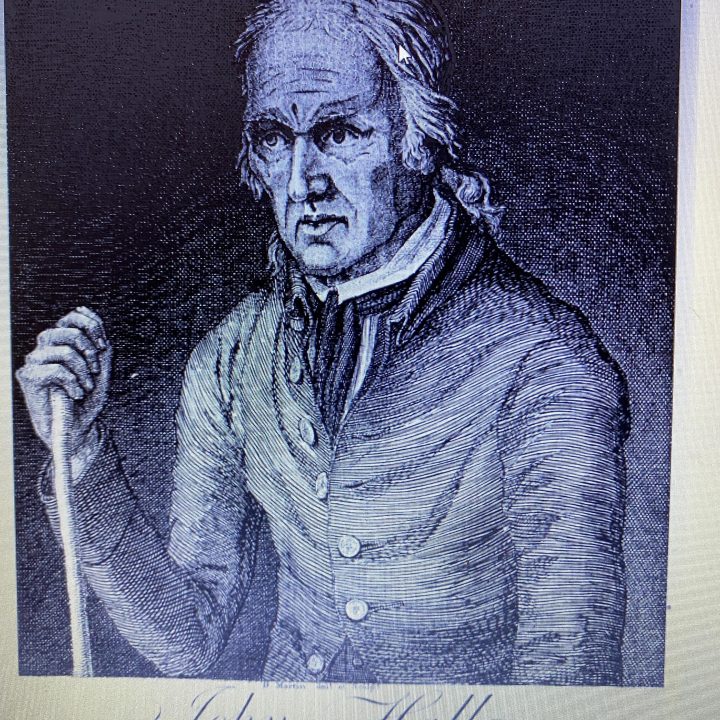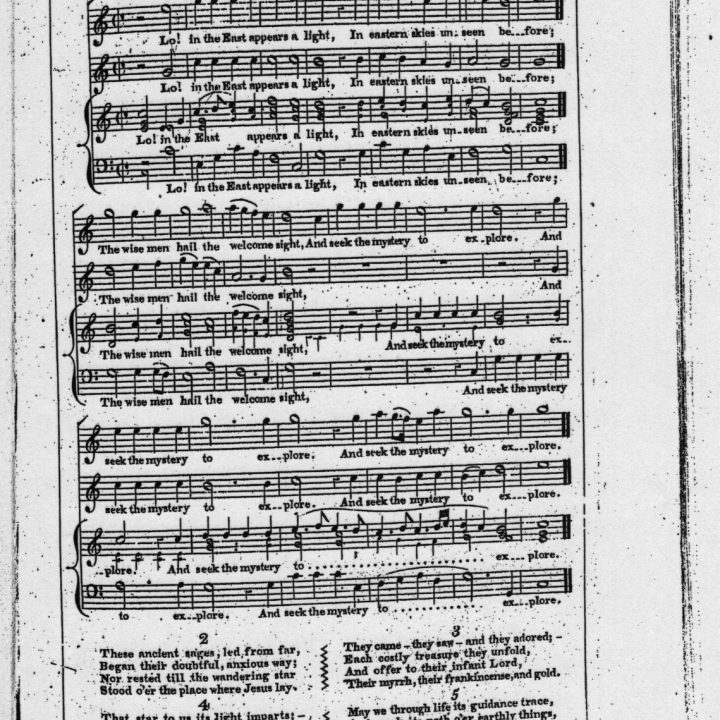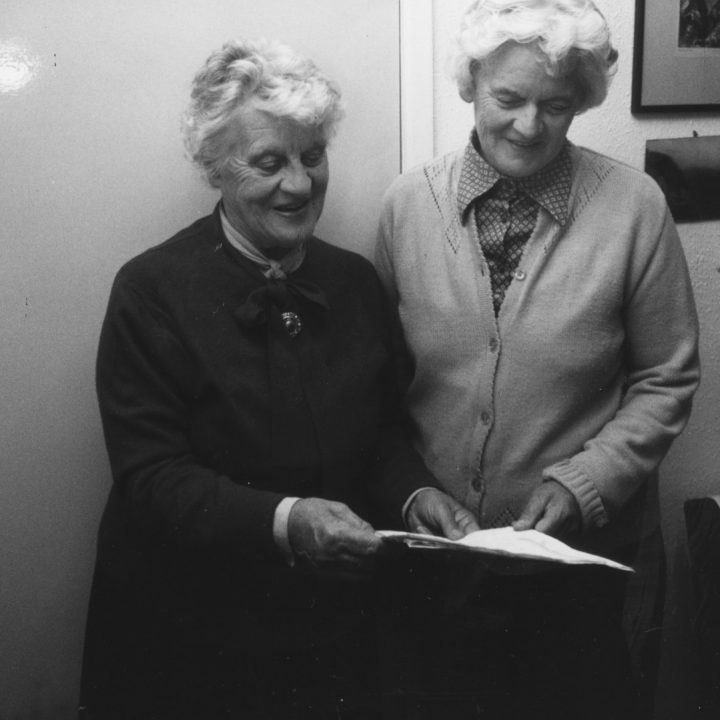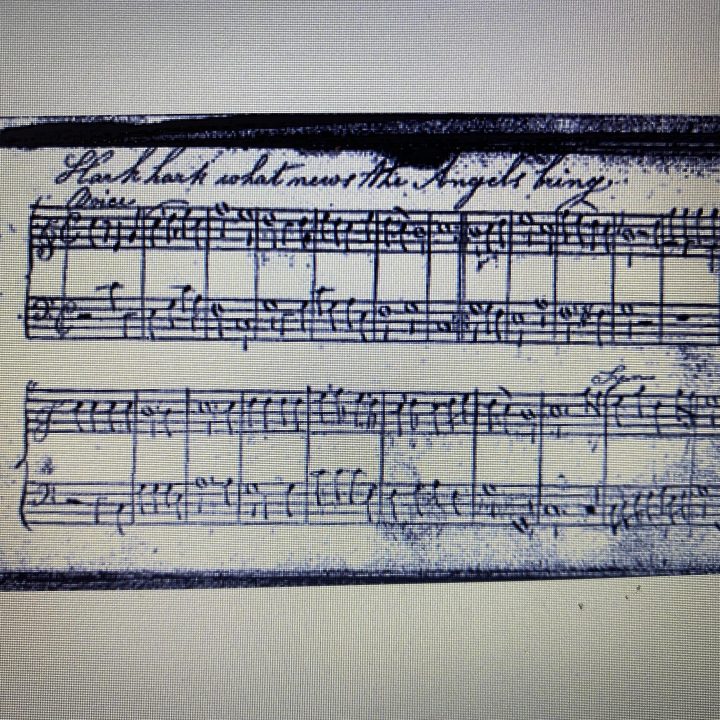Ian Russell
'Hark, Hark’ – A Paradigm of the Sheffield Carol Tradition
It's great when things connect, and you can come full circle with ideas and information. Well, this story starts right at the beginning of my ethnomusicological fieldwork in 1969, when I visited the Three Merry Lads at Lodge Moor, near Sheffield, and had a wonderful evening, recording and singing local carols in the company of 15 or 16 great people. I know we started off singing a carol called ‘Hark, Hark’, and my story concerns this carol, which for me is a paradigm of the carolling tradition in the Sheffield region.
Having been to the pub and heard these wonderful carols, I wanted to find out more and see what was written down about them. I must admit I was hugely disappointed because none of the standard works on Christmas carols at the time gave any mention or serious consideration of the story of the Sheffield carols, in fact, this genre of ‘village carols’ was largely dismissed as being an aberration in the sacred song canon or maybe even an embarrassment that was kept hidden, as I found out later. But I did find one or two locally printed carol collections, as well as newspaper cuttings in the Local Studies Library in Sheffield. I also found some service sheets in chapbook format for Christmas Day from Nonconformist chapels in Sheffield, dating from the 1820s. Looking through these I saw straightaway that their repertoire related to that of the local carolling tradition. Typically, the services would start at 6.00am in the morning, and often one of the first carols to be sung was ‘Hark, Hark’. Next to the title was an indication of the tune to be sung, naming its composer, in this case ‘John Hall’ of Sheffield Park, a blacksmith, who died in 1794. Hall never received any sort of meaningful patronage and sadly died in the poorhouse

A very quick conversation with the local studies librarian, Martin Olive, led me to be shown this extraordinary engraving of John Hall, who Eric Mackerness described as Sheffield's first composer of note. Hall composed oratorios, hymn and psalm tunes, and he composed carols. Sadly, most of his music has been lost. As I was particularly interested in the carols that are sung in oral tradition, I decided to track down the tune by John Hall and looked around. I found that one of his melodies in the same metre was included in a hymnbook by Edward Miller, published in Sheffield in 1805. This tune is called ‘Eastern Star’, but it wasn't the tune that I'd heard at Lodge Moor and here it’s set to a different text. (Note the melody is in the third staff line next to the bass, not an example of a modern SATB choral setting.) Perhaps my lead had gone cold.

The words ‘Hark, hark! what news the/those/these angels bring’ were very popular in the first half of the 19th century as I found them on several broadsides. Here is an example from a Nottingham printer of a carol sheet from the Bodleian collection of broadside ballads. There are five carols on the sheet and ‘Hark, Hark’ is the last of these. This sheet dates from around about 1830, so, it's contemporary with those service sheets I was referring to earlier. I should add that we don’t know who wrote these words

The next part of the story concerns fieldwork in the 1970s when I started going to Castleton and researching the carolling tradition there. I soon found out that they had their own tune for ‘Hark, Hark’. I was very pleased to find that this was the same John Hall tune printed in Miller’s hymnbook. Here is a field recording from the 1980s of the sisters Jessie Hall and Nellie Lampe (née Hall), and their friend, Betty Bramwell, singing ‘Hark, Hark’singing'.

As you can hear, they sang it in just one part, the melody. One thing of which we can be sure is that when John Hall composed it, he wrote it in more than one part. A manuscript collection from the 1820s from a man called George Maltby, who lived in Foolow in the Derbyshire Peak and later moved to Tideswell, included the carol in two parts, unlike Edward Miller's arrangement. Jessie and Nellie treasured this carol along with others in their repertoire.

When Vaughan Williams visited Castleton in 1908, this was one of the carols he didn't note down from his contact James Hall. He wasn't interested in it, because it was a carol that was associated with singing in parts. To him it wasn't a genuine ‘folk carol’. It was a carol that he felt had a known composer. Of course, it did. It is the ‘transmission in tradition’ element, not the origination, that distinguishes such carols.
The story now takes a side-step to Green Moor near Stocksbridge. I met Douglas Marsden who with his wife, Ethel, had led the Green Moor Carollers. He told me that the tradition had lapsed so I couldn't hear them sing. He didn't have any recordings, but the one thing he could do was arrange a get-together of the stringed instrument players who accompanied the carols at Green Moor. One Saturday, we spent the best part of the day recording their repertoire. Amongst their carols was the setting of ‘Hark, Hark’ by John Hall (they had no idea of its composer), which they called ‘New Hark’. Here we have Douglas Walton and the Green Moor instrumentalists playing ‘New Hark’. As you can hear, it’s quite elaborate and starts with an opening passage known as a symphony.
There's patterning, runs, and arpeggios, embellishing the melody line, in the manner of an obligato. This gives us a remarkable insight into the way that carol bands, such as the Worrall’s Big Set, would play and accompany the carols in the late 18th and 19th centuries. It may, in fact, have been how John Hall heard his carol sung in the 1780s, even if it began life in two or three parts. It’s my opinion that most of the carols started off being performed in two parts (treble and bass), because of their fuguing element, and subsequently were made more elaborate, whilst in oral tradition the two-part formula has persisted.
Here is a recording of Castleton’s ‘Hark, Hark’, from 8 December 2019 at the George Hotel, some fifty years after that visit to Lodge Moor. The musical setting is not unlike the version in the Maltby manuscript
To bring us full circle we need to connect with a remarkable tradition that originated in the Cheshire, Yorkshire, Lancashire border, at a village called Micklehurst near Mossley. A group of Englishmen emigrated from there in the 1830s and 1840s to a part of Pennsylvania, which became known as York County. Under the leadership of William Heathcote, they set up a water-powered woollen mill, much as they had left in Micklehurst. At Christmas 1848 the Heathcote family led a carol party around their neighbourhood, which became known as Glen Rock. The party of five sang to the accompaniment of a bassoon and they were very well received. Over the years, their tradition not only took hold but thrived. Here we have a contemporary recording of one of the five carols they took with them from Micklehurst; it’s a version of John Hall’s ‘Hark, Hark’.
As you can hear, they're singing in three parts and they have brass instruments accompanying them, but it’s not as complex as the form of stringed accompaniment which we heard from Green Moor. It's sung with tremendous gusto and clearly their tune totally connects with the tune that John Hall wrote
This has brought us full circle because it shows, I think, the importance of place and identity. It illustrates how people used local settings of tunes to words found on broadsides. It demonstrates how the character of this music has varied in tradition, from the complex 18th century sound of village bands to the acapella tradition epitomised by Jessie, Nellie and Betty. It shows how it's performed in active tradition in the pub in Castleton, sung in two parts. And furthermore, it shows how the carol has evolved in Pennsylvania through oral tradition, completely isolated from other communities with similar traditions. The Glen Rock Carollers don't sing from music; they learn by ear. They do, however, sing as a male-voice choir, under the direction of Darryl Engler. Their carols are sung in three parts. Their full-voiced style of singing is another source of connection. They sing forte/fortissimo, just as we do in the pubs. The all-male line-up was certainly the norm in many English village communities in the 19th century and into the 20th. It was also the case in most of the pubs in the Sheffield area and in the Hope Valley before the Second World War.
I haven’t mentioned the several other tunes to which the text ‘Hark, Hark’ is sung in local traditions nor yet the tune sung at Lodge Moor in 1969, which is known as ‘Good News’. Did John Hall write this tune too? There are still a few gaps.
5 December 2021
Bibliography
Bodleian Ballads, Bod18411
http://ballads.bodleian.ox.ac....
Brightmore (Maltby) MS101.2, George Maltby, Foolow, Derbyshire, c. 1820, Village Carols Archive.
Glatfelter, Charles H, Salute this Happy Morn: A History of the Glen Rock Carol Singers (Glen Rock, PA: Glen Rock Carolers Association, 1972; rev. edn 2007)
Mackerness, E. D., Somewhere Further North: A History of Music in Sheffield (Sheffield: Northend, 1974).
Miller, Edward, Dr. Watts’s Psalms and Hymns, Set to New Music (Sheffield, 1805), in the Methodist Archives, London.
Russell, Ian, The Derbyshire Book of Village Carols (Sheffield: Village Carols, 2012, new edn 2020).
Russell, Ian, The Sheffield Book of Village Carols (Sheffield: Village Carols, 2008, new edn rev. 2018).